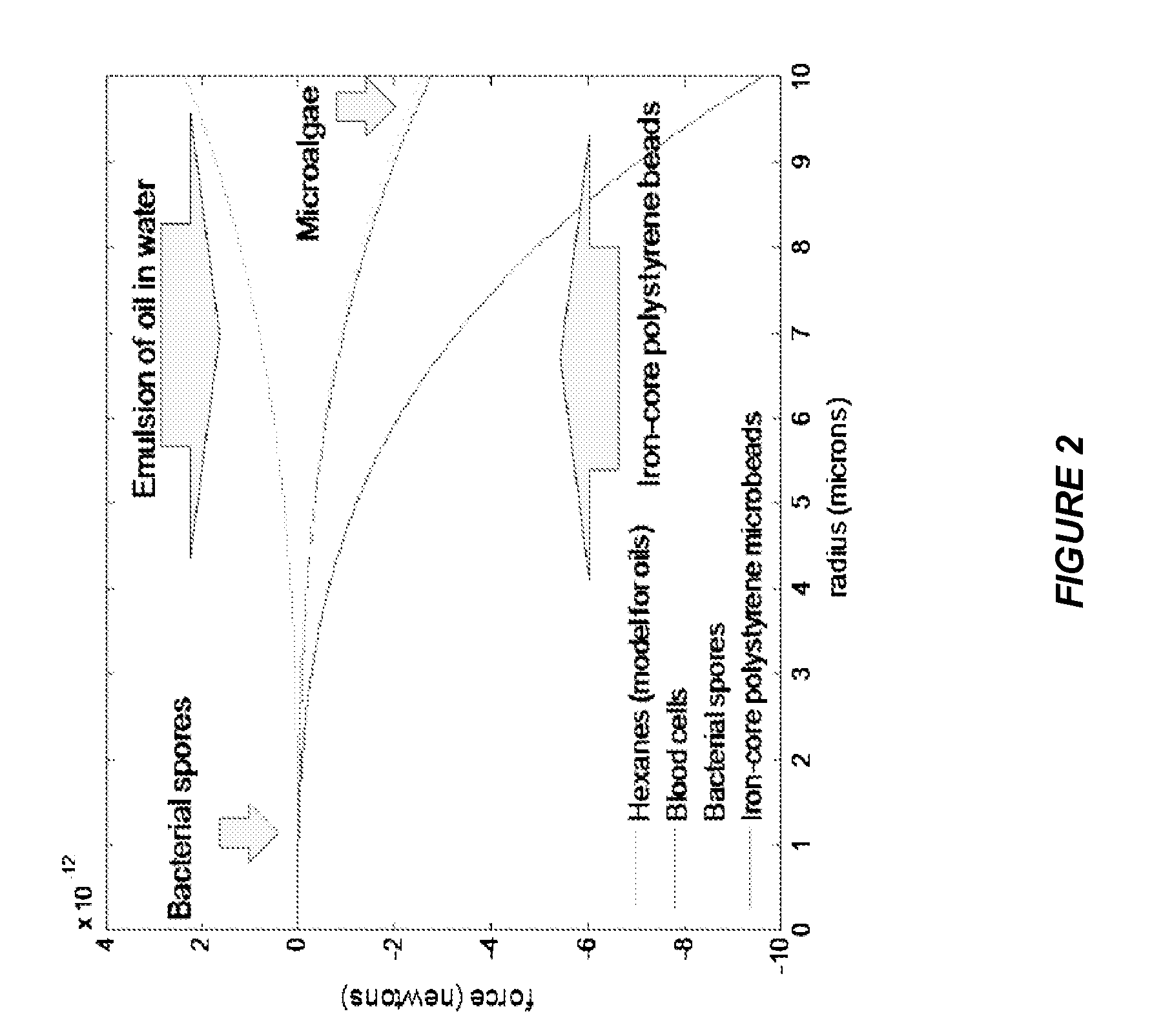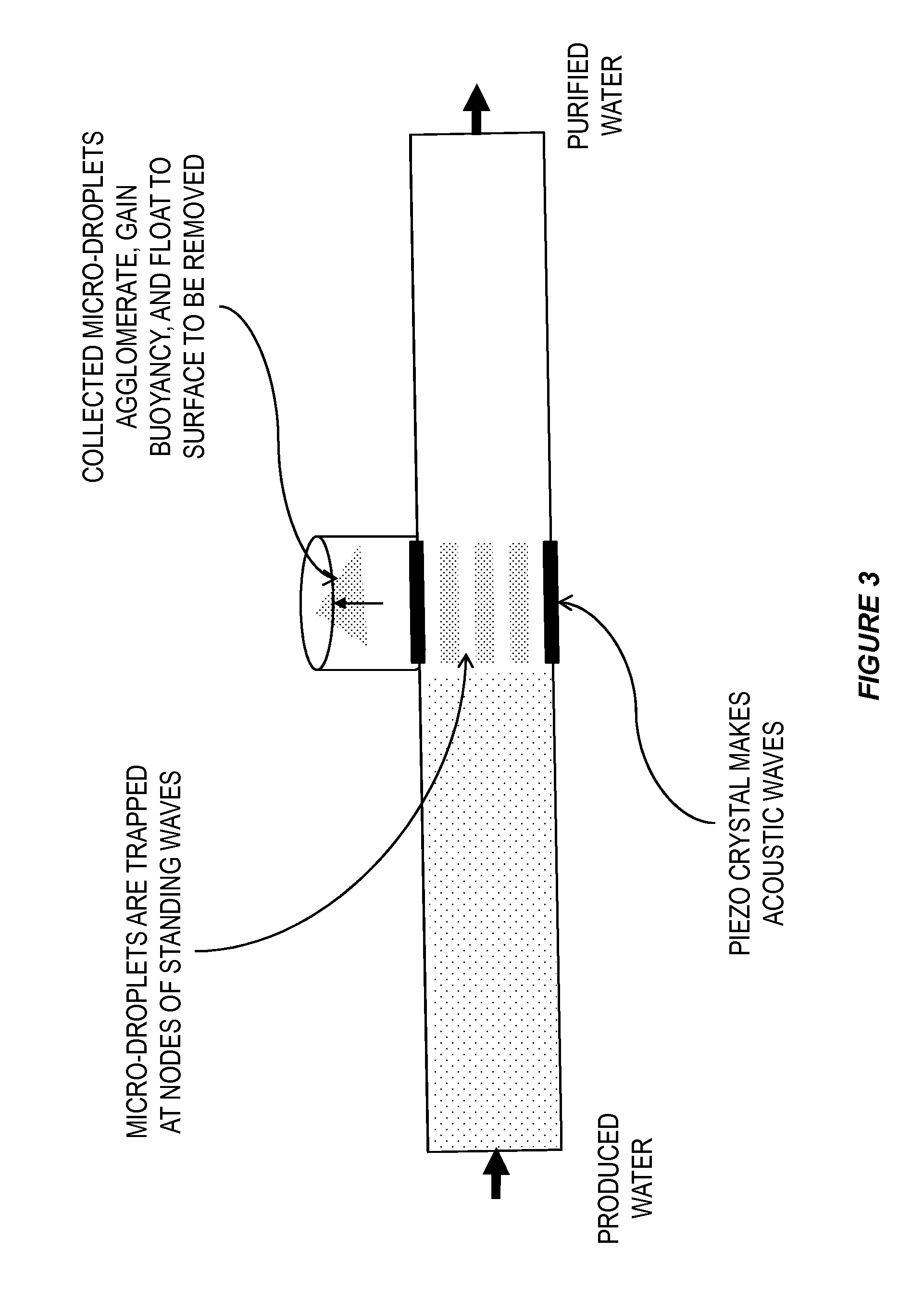Ultrasound and Acoustophoresis Technology for Separation of Oil and Water, with Application to Produce Water
a technology of acoustic energy and ultrasonically generated waves, applied in the direction of separation process, water treatment, instruments, etc., can solve the problem of not being able to report in the literature on the use of acoustophoretic trapping of particles against a fluid drag force in large-scale flow channels, and achieve the effect of maximizing acoustic energy transfer
- Summary
- Abstract
- Description
- Claims
- Application Information
AI Technical Summary
Benefits of technology
Problems solved by technology
Method used
Image
Examples
Embodiment Construction
[0051]This invention relates to large-scale acoustophoretic technology to collect and process oils from water. The resulting oil layer can then be harvested for use as a feedstock for the production of other petrochemicals or for other uses.
[0052]Whereas there is a well-established literature on applications of acoustophoresis in microfluidics, our innovation is to use acoustophoresis for separations in extremely high volumes and in flowing systems with very high flow rates. This has been done for micron-size particles, for which the acoustophoretic force is quite small. For example, Bacillus cereus bacterial spores (a model for anthrax) have been trapped at 15% efficiency in an acoustophoretic cavity embedded in a flow system that can process drinking water at rates up to 120 mL / minute (1 cm / second linear flow) [1]. The concentration ratio has been as high as 1000 in our single-pass, small-scale prototype acoustocollector.
[0053]An acoustophoretic separator is created by using a pie...
PUM
| Property | Measurement | Unit |
|---|---|---|
| power | aaaaa | aaaaa |
| wavelength | aaaaa | aaaaa |
| oscillating voltage | aaaaa | aaaaa |
Abstract
Description
Claims
Application Information
 Login to View More
Login to View More - R&D
- Intellectual Property
- Life Sciences
- Materials
- Tech Scout
- Unparalleled Data Quality
- Higher Quality Content
- 60% Fewer Hallucinations
Browse by: Latest US Patents, China's latest patents, Technical Efficacy Thesaurus, Application Domain, Technology Topic, Popular Technical Reports.
© 2025 PatSnap. All rights reserved.Legal|Privacy policy|Modern Slavery Act Transparency Statement|Sitemap|About US| Contact US: help@patsnap.com



